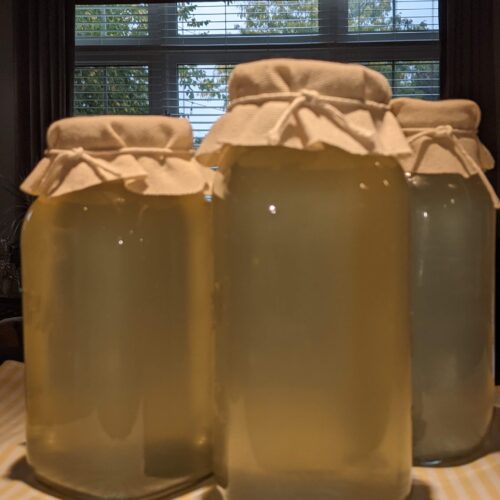
Vegetable Stock
I admit it. I used to buy them too. Those little cute cubes, so neatly packaged, they made life a little easier. Until I took the time to read the ingredients. Ugh. Most of them contain unhealthy nonfood ingredients. Very ultra-processed. I’m not judging you if you use them. I realize their advantages but with the increased attention to brain health, the environment and soaring food prices, why not make your own vegetable stock! While you can certainly use the pretty vegetables that are in peak shape, consider using vegetable scraps and the tired-looking vegetables we all have sitting at the bottom of our fridge. They are all full of flavour and micronutrients. I keep a freezer container to collect vegetable ends, peels, unused herbs, stems and when I have enough, I turn them into a flavourful nutrient-rich stock. Sometimes, I will throw in cooked leftover vegetables that I know no one will eat. Almost everything's game except for potatoes, beets, and bitter greens. Basically, you are adding water to boil vegetables and herbs so that they exude their flavours and nutrients into the broth. Drain, cool, and store. That’s it. I tend to chop my veggies into small pieces and saute them in olive oil until they begin to caramelize. This step adds more flavour if you are making a small batch. Then I cover generously with water, bring to a boil, add herbs, and then simmer with a lid, partially covered, for about 30 to 45 minutes. If I’m feeling particularly lazy, I just make big chops, add to a pot, cover with water, bring to a boil and simmer for about 90 minutes. Then strain, cool, and store. Now you are ready to add your own homemade stock to boost your other recipes.
Ingredients
- 2 tbsp olive oil
- 2 large onions remove skins and wash before using
- 1 leek can use the green inedible part
- 4 ribs of celery include leaves
- 2 large carrots unpeeled
- 3 cloves garlic peeled and minced
- Bunch of fresh herbs leaves and stems (parsley, sprigs of thyme)
- Dried herbs 2 bay leaves, ½ tsp dried thyme, optional
- Black peppercorns crushed or coarsely ground
- 2 quarts cold water
Instructions
- Wash all vegetables and herbs very well. Chop into 1-inch chunks or smaller. (The greater the surface area, the more quickly vegetables will yield their flavour.)
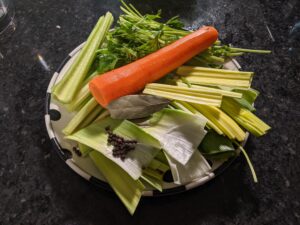
- Heat oil in a large soup pot. Add onion, celery, carrots, leeks, and dried herbs. Stir to cook over high heat for 5 to 10 minutes until lightly golden. Add garlic and stir until fragrant but not browned.
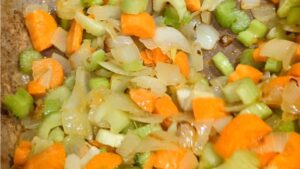
- Add cold water and bring to a boil. Lower heat and add fresh herbs. Simmer, partially covered for 30 to 45 minutes. If vegetables are in larger pieces, simmer for up to 90 minutes.
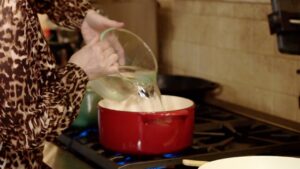
- If stock is too bland, consider simmering longer. If you’ve simmered too long, your stock will be more concentrated. If it has evaporated too much, add a little more water.
- Strain, cook, and store.
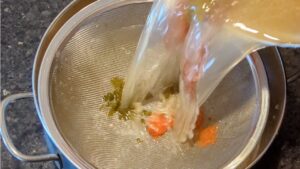
Video
Notes
Storing your stock is just as easy.
For recipes that need just a bit of stock, freeze in ice cube trays or a muffin pan. Then store in a freezer bag or container.
For recipes that need bigger volumes, freeze the stock directly into freezer storage bags. Place them flat in a baking pan in case there is leakage. You can also freeze using mason jars, leaving about an inch of headspace for the stock to expand.
As far as salt goes, I tend to not add salt to my stock. That way, I can control the seasonings better when I am adding it to my recipe. If you do salt it, make sure you label it before storing.
Be creative and discover your own preferences by testing different vegetables, fats (consider using coconut oil), aromatics, herbs, and spices.